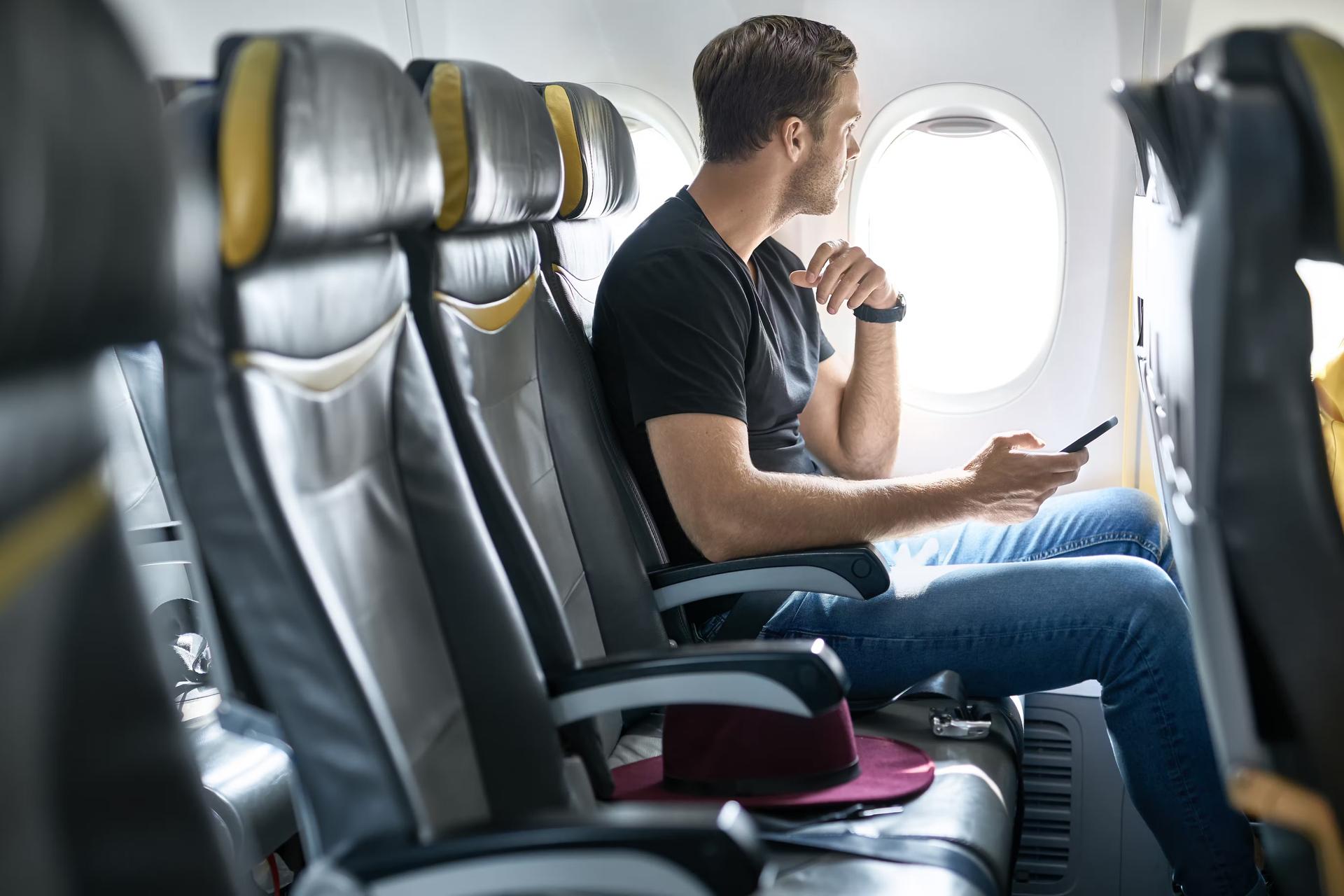One of the last bastions of phone-free travel is about to get connected, eliminating the need for airplane mode – at least in the European Union.
In late November, the EU announced that airlines can provide 5G technology on planes, alongside previous mobile-technology generations, allowing passengers to use their smartphones without restrictions during flights.
“5G will enable innovative services for people and growth opportunities for European companies,” said Thierry Breton, EU Commissioner for the Internal Market, in a press release. “The sky is no longer a limit when it comes to possibilities offered by super-fast, high-capacity connectivity.”
The deadline for countries within the EU to make 5G frequency bands available for planes is June 30, 2023. That means folks flying in the EU might be kissing digital disconnection goodbye by summertime. 5G will make all smartphone features operational during air travel.
Here are answers to questions about what this new rule means and how it will impact travelers.
What is this new technology?
The fifth-generation mobile network, 5G is the latest wireless standard to use radio frequencies to carry information through the air. Inflight 5G service will be provided on aircraft using special network equipment called “picocell,” which uses a satellite to connect the plane’s network to the mobile network on the ground.
According to EU sources, once picocell technology is present on an aircraft, passengers can use their phones through the mobile data function rather than the wi-fi function.
I thought airplane mode was a necessary safety measure. How does this work?
Airline passengers are told to set phones and other tech devices to airplane mode because of potential electromagnetic interference with an aircraft’s navigation systems. But the frequencies for in-flight 5G (5 GHz) differ from those necessary for flying a plane (4.2 to 4.4 GHz), making the risk for interference from the latest standard extremely small.
Rules around airplane mode have also grown increasingly lax over the years. In 2014, the European Union Aviation Safety Agency updated its guidance to permit the use of mobile phones throughout flights, and a 2017 survey by Allianz Global Assistance found that about 40% of passengers don’t put their phones into airplane mode while on board. No data suggests cell-phone interference has caused any airplane problems, much less resulted in a crash.
Will I be able to make calls during a flight?
Yes. The days of being unreachable during a flight will soon be a distant memory. This might be great news for travelers who need to make emergency calls, contact loved ones or coordinate travel plans mid-flight. Yet for the airline industry, the notion is controversial.
According to a 2019 report from CNN, flight attendants overwhelmingly believe voice calls on planes will cause arguments between passengers. And with the well-publicized mayhem that’s taken place on airplanes in the past few years, who can blame them? The European Union Aviation Safety Agency (EASA) notes a European flight gets disrupted once every three hours by “unruly” passengers. In the US, the Federal Aviation Administration (FAA) recorded over 2000 reports of unruly passengers so far in 2022 – the second-highest record to date. To avoid cell-phone squabbles, keep chatter to a minimum and avoid unnecessary calls.
Can I stream videos?
Absolutely. Passengers with 5G-compatible devices should be able to download everything from movies, podcasts, TV shows and more within minutes, ensuring you’ll never again be at the mercy of lackluster in-flight entertainment. As always, be sure to use headphones to avoid disturbing nearby passengers.
How much will the service cost?
It isn’t clear how much using the 5G service will cost – but don’t expect it to be free. Flying through foreign countries not covered by your provider will probably incur international roaming charges, and cell-phone companies will likely charge a premium for sky-high service. In addition, airlines are spending big bucks to get planes retrofitted for this new technology. Cell-phone-using travelers can expect to absorb some of that cost.
To avoid exorbitant fees, connect to wi-fi, use a prepaid SIM card or stick to the status quo ante by keeping your phone in airplane mode.
Will the rest of the world follow suit?
The relationship between 5G and air travel is complicated. While not all countries use the same 5G protocols and in-flight frequencies as the EU, many are working hard to retrofit aircraft for a 5G future.
In January, US airlines said 5G networks could cause chaos for flights, delaying the launch of 5G technology near airports. The nation’s 5G frequencies are closer to those used on planes, making interference with in-flight safety equipment a greater possibility than in the EU. While planes are on track to be retrofitted for 5G by mid-2023, delays caused by airlines, the FAA, and the Federal Communications Commission (FCC) could mean a prolonged battle for progress.
No matter where you’re flying – from the UK to Uruguay – if you’re asked to use airplane mode, go ahead and comply. It’s always best to play it safe and be courteous when hurtling through the air in a big hunk of metal.
